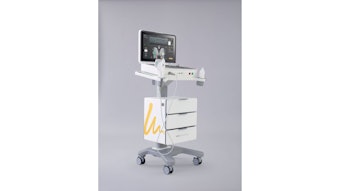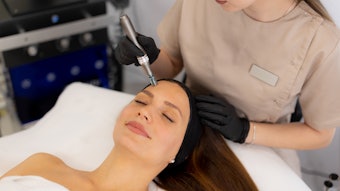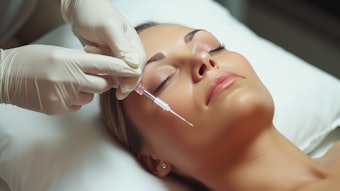
Abstract: It’s no secret that aesthetic medicine is becoming big business for medical professionals. But to keep an aesthetic practice at the pinnacle of success, it’s imperative to have an excellent support staff, quality partnerships, products and procedures that provide patients with visible results, worthwhile networking opportunities, and the continuing desire to keep your business striving for greatness at all times.
The numbers already tell much of the story about the booming medical aesthetic industry, often reported in the pages of this magazine and on its website. Nonsurgical cosmetic procedures generate billions of dollars in revenue each year, and more and more patients are demanding these types of procedures annually. In fact, they are forecasted to account for as much as 97% of all cosmetic procedures performed in 2015.1
Of course, an added benefit to you and your practice is that these are non-reimbursable, private pay procedures, which not only lead to increased profitability but also improved cash flow because you are not waiting for insurance companies or Medicare/Medicaid to pay. But even with the growing state of the industry, you still need to put your practice in the best position for success.
Well-trained, knowledgeable team
It is vital your team have a strong skill set and broad knowledge base related to the procedures you perform and products you sell. This type of continuing education is one of the most effective investments you can make, as it increases staff members’ confidence when working with patients and addressing concerns or questions they may have. Your staff members as individuals—and your practice as a whole—will be seen as more credible and trustworthy by your patients with this knowledge. This will lead to repeat patient visits, as well as an increase in the number of referrals you receive.
Be sure to include your non-clinical staff members in education, particularly with respect to product knowledge. Also, have them seek learning opportunities directly related to their respective functions. This will enhance your patients’ experience, which again will lead to more repeat visit and increased referrals.
The right partners
When determining what product lines to represent, you are putting your reputation and credibility at stake. Be sure to invest the time and energy necessary to make the best decision for your practice. It will impact the quality of care you can give, not to mention the overall profitability you can achieve.
First and foremost, investigate a line’s reputation among other medical professionals, particularly those that have experience with multiple lines. The key things to look for as you do this include how effective the line is at achieving desired results, the level of customer service you can expect, the technical expertise among the line’s representatives, and what opportunities exist for training and education. You also will want to consider what up-front and ongoing commitments you will have to make to a line, such as required opening orders and minimum order quantities. These often can be considerable cash outlays that may negatively impact your ability to invest in other areas of your practice. They also may prevent you from carrying just the inventory you need to treat your patients’ specific skin needs.
Products that work
There’s no overemphasizing the need to use products that work to achieve the results your patients desire in treating their skin conditions, even if that is just in maintaining their current level of skin health. Having products with proven, demonstrated results documented in reputable peer-reviewed journals only increases your team’s confidence and credibility in dispensing products for in-office treatments, as well as for patients’ home care needs.
You also have a much greater sense of predictability in terms of the expected outcomes for your patients when using well-researched products. You can better anticipate potential complications or avoid them altogether because of the depth of resources available about particular ingredients and their uses.
Showing results
It is one thing to achieve great results with your patients; it is quite another to show them. The proper use of before-and-after photos, particularly in the form of case studies, not only helps your patients better understand the results they are seeing, but they also serve as a great teaching and marketing tool when reaching out to prospective patients. Operationally, this is a straightforward process, but you must be diligent in your follow-through to maximize the power.
Each time a patient visits, take her picture using either a professionally designed photo system or, at the very least, a good camera. It is imperative to be as exacting as possible in matching the patient’s positions for each photo. This ensures consistency and allows you to quickly identify the visible changes in the skin from one consultation to the next.
If you are using electronic medical records for your charting, chart as you normally would and attach the correct photos to match up with the respective visits. This creates a catalog for reference and shows progress over time. When put in the context of a proper case study, it tells a compelling story to your prospective patients, especially when used on your website and in marketing materials.
Review all of your patients’ charts and photos on a monthly basis, comparing their most recent visits with a baseline, the initial visit. This will give you a clear indication of the progress and can quickly highlight patients that would be best suited as the subjects of case studies. Also, it is incredibly important to get a signed release from patients to be able to use the photos for marketing and promotional efforts.
Authentic relationships
When you build relationships with others in your community, you become a powerful and trusted resource for those around you. Many people refer to this as networking, which it is, but it is important to think of networking as more than simply handing out business cards and drumming up referrals. Successful networking comes from taking a genuine interest in other people and learning more about them and their needs. Is there something you can do to help them, or do you know someone else who could help? Whenever possible, use your network to make introductions among those who complement each other, can support each other or can provide needed services. This process is much easier and more genuine when you network with people you enjoy being around.
As you build these relationships, those you meet will want to know what they can do to help you. Be prepared when this question comes along so you can clearly articulate what you do, why, for whom, what makes it special and how others can help you do it better. When you do receive referrals from others, you will want to follow through quickly and efficiently by thanking the person at the time they make the referral, as well as following your first meeting with the individual referred. It is vital you treat that referral with the utmost professionalism, because how you treat them is a reflection on the person who made the referral. Respect and honor that, and more referrals will come your way.
It is important to note that just because an industry is thriving does not mean all of its players are enjoying the same level of success. By making the right investments in ensuring you have a well-trained and knowledgeable team, choose the right partners, use products that work to meet your patients’ needs, show the results you are achieving with your patients and build quality relationships, you can create and maintain an effective, thriving aesthetic practice that will enjoy success regardless of the state of the industry.
Reference
1. www.plasticsurgery.org/Media/Press_Releases/Cosmetic_Surgery_Procedures_to_Exceed_55_Million_in_2015_ASPS_Study_Predicts.html(Accessed Aug 11, 2010)










